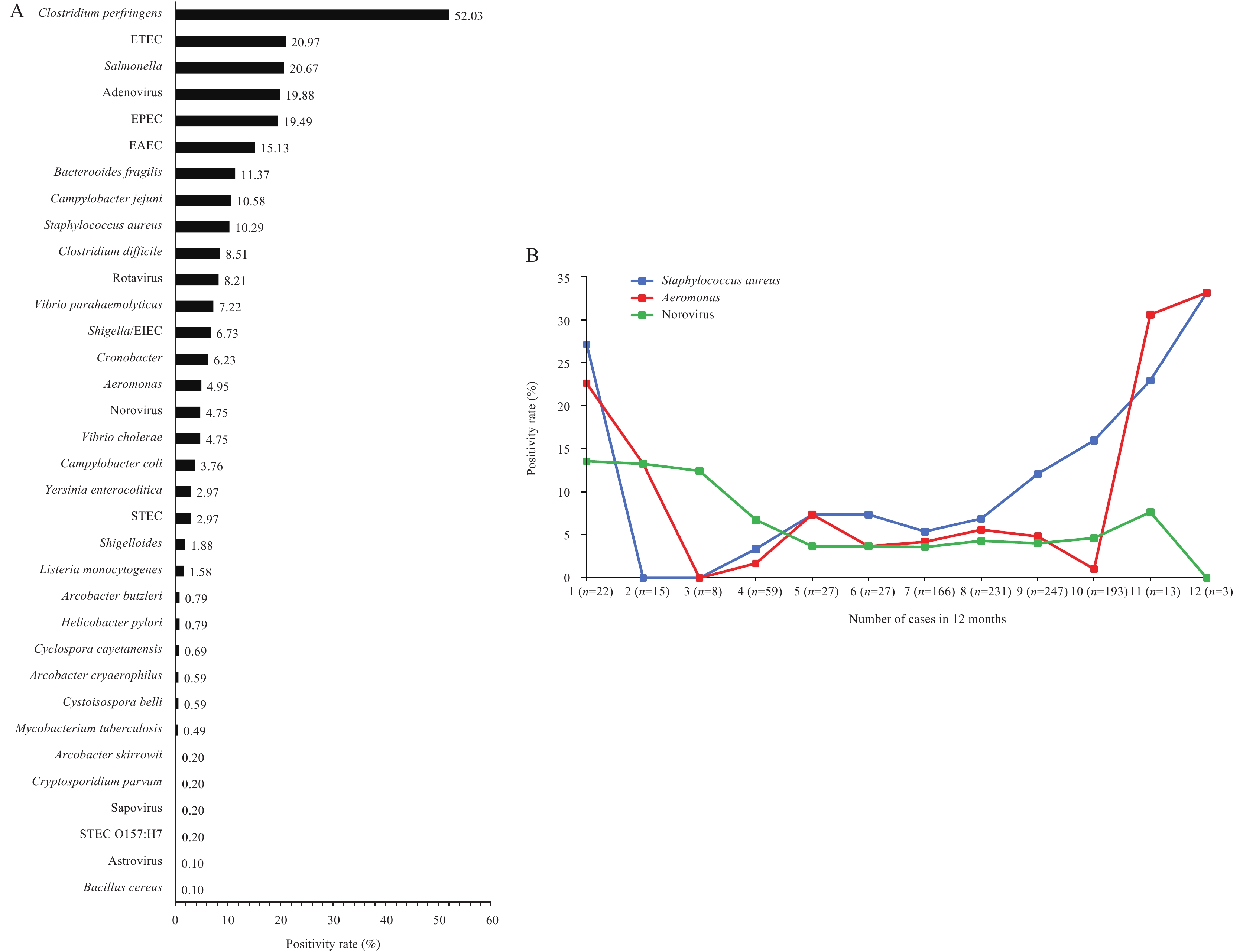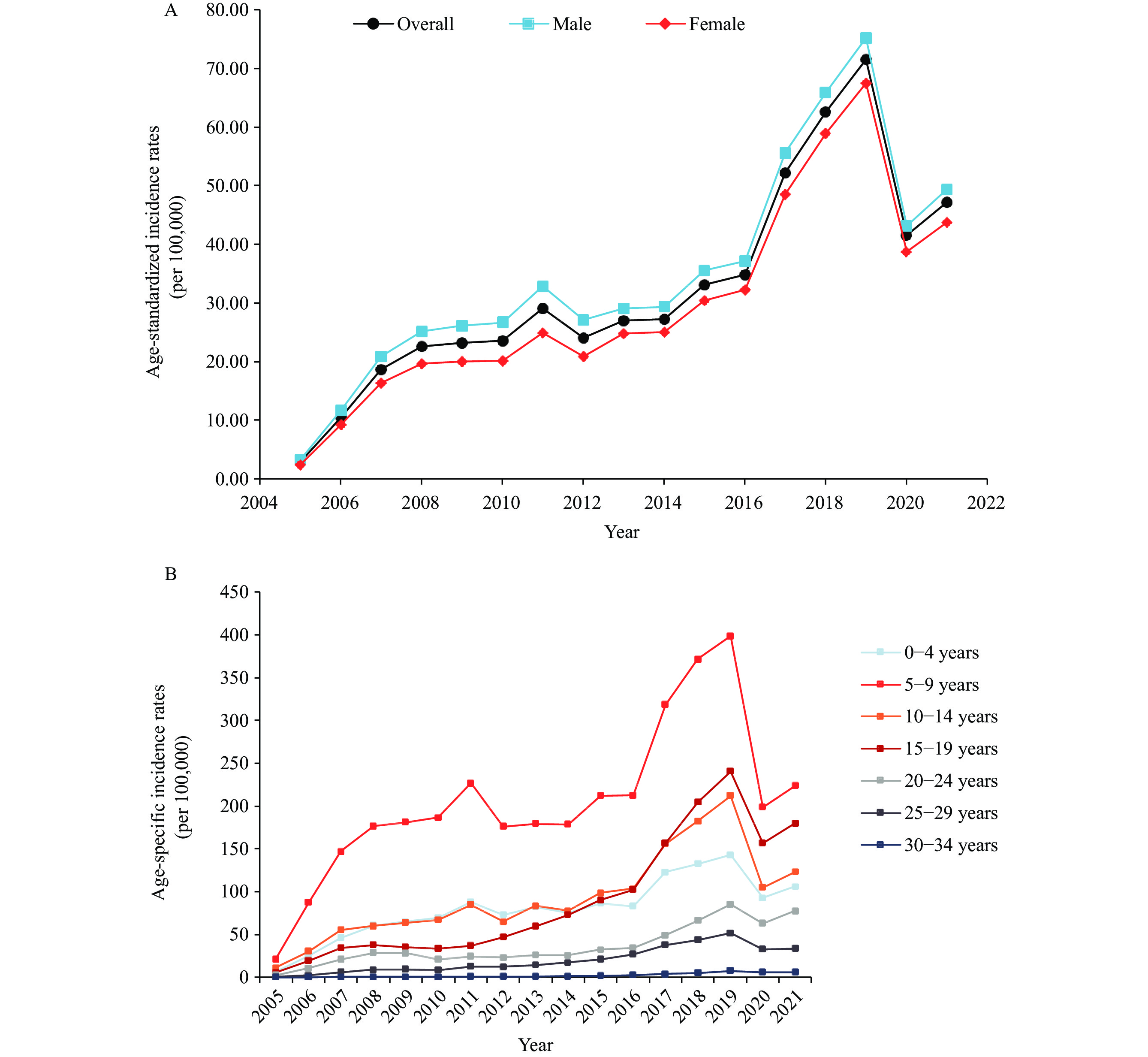2024 Vol. 6, No. 18
Foodborne diseases present a substantial global health risk. Traditional diagnostic methods have constraints, but advancements in molecular techniques, like quantitative polymerase chain reaction (qPCR), provide a hopeful solution.
We examined 1,011 stool samples from individuals suspected of foodborne illnesses. Our analysis indicated a significant presence of Clostridium perfringens, Salmonella enterica, enterotoxigenic Escherichia coli (ETEC), and adenovirus. Notably, co-infections were identified in 71.22% of the samples.
The data emphasize a notable prevalence of co-infections, highlighting the complexity of foodborne illnesses. This study underscores the significance of utilizing contemporary diagnostic methods in densely populated urban areas such as Beijing Municipality.
Varicella is an acute respiratory infectious disease primarily affecting children. However, recent studies have indicated an increasing susceptibility to varicella among older age groups.
The findings demonstrate a significant rise in the incidence rate among individuals aged 15–19. Males under 20 years old were found to have a higher risk compared to females, whereas males had a lower risk compared to females aged 20–35 years.
This study is the first comparative analysis using varicella data reported between 2005 and 2021 to examine the contributions of age, period, and birth cohort to varicella incidence in China. This study aims to provide a comprehensive analysis of the epidemiological characteristics of varicella in China and identify high-risk groups. The results of this study will contribute valuable information for the development of varicella prevention policies.
Foodborne diseases are a growing public health concern with a notable disease burden in China.
Two children with diarrhea visited a healthcare facility within 24 hours on August 1 and 2, 2023. Salmonella Grumpensis was detected in their stool samples by the public health laboratory. Whole genome sequencing (WGS) analysis revealed characteristics typical of outbreak strains. Although the origin of the outbreak was unknown, the possibility of a hidden shared infection was deemed feasible.
It underscores the importance of thorough genomic surveillance to promptly detect emerging pathogens. Public health laboratories play a crucial role by utilizing advanced genomic technologies for accurate pathogen identification and timely warning systems.
This research investigates trends pertaining to the prevalence of low fruit and vegetable consumption among the labor force population in China. The study considered data derived from four nationally representative cross-sectional surveys.
The data under review for this study was derived from the China Chronic Disease and Risk Factor Surveillance (CCDRFS) carried out in 2010, 2013, 2015, and 2018, correspondingly. We utilized a food frequency questionnaire to evaluate the quantity and frequency of fruit and vegetable consumption. The estimated prevalence of low fruit and vegetable consumption was calculated for each survey, while considering factors such as sex, age, location, and socioeconomic status (SES). Participants’ SES was ascertained via latent class analysis, serving to identify distinct classes based on criteria such as education, occupation, and household income per capita. Logistic regression was deployed to determine the statistical significance of trends.
From 2010 to 2018, there was a notable increase in the average daily consumption of vegetables and fruits among the working population, rising from 418.6 g/day to 491.8 g/day (P<0.01 for trend). During the same period, the prevalence of low fruit and vegetable intake declined from 51.1% to 43.5% [P<0.001 for trend; −1.6% average annual percent change (AAPC)]. This downward trend was prevalent across genders, however, certain subgroups of adults (e.g., those living in rural areas or those of low SES) saw stable consumption levels throughout this period (P>0.05 for trend).
Over the past nine years, there has been a notable decline in the prevalence of low fruit and vegetable consumption among the labor force population in China. Moreover, the comparatively deficient intake of fruits and vegetables evident among individuals of lower SES warrants further attention.
Foodborne diseases pose a significant public health concern globally. This study aims to analyze the correlation between disease prevalence and climatic conditions, forecast the pattern of foodborne disease outbreaks, and offer insights for effective prevention and control strategies and optimizing health resource allocation policies in Guizhou Province.
This study utilized the χ2 test and four comprehensive prediction models to analyze foodborne disease outbreaks recorded in the Guizhou Foodborne Disease Outbreak system between 2012 and 2022. The best-performing model was chosen to forecast the trend of foodborne disease outbreaks in Guizhou Province, 2023–2025.
Significant variations were observed in the incidence of foodborne disease outbreaks in Guizhou Province concerning various meteorological factors (all P≤0.05). Among all models, the SARIMA-ARIMAX combined model demonstrated the most accurate predictive performance (RMSE: Prophet model=67.645, SARIMA model=3.953, ARIMAX model=26.544, SARIMA-ARIMAX model=26.196; MAPE: Prophet model=42.357%, SARIMA model=37.740%, ARIMAX model=15.289%, SARIMA-ARIMAX model=13.961%).
The analysis indicates that foodborne disease outbreaks in Guizhou Province demonstrate distinct seasonal patterns. It is recommended to concentrate prevention efforts during peak periods. The SARIMA-ARIMAX hybrid model enhances the precision of monthly forecasts for foodborne disease outbreaks, offering valuable insights for future prevention and control strategies.



 Subscribe for E-mail Alerts
Subscribe for E-mail Alerts CCDC Weekly RSS Feed
CCDC Weekly RSS Feed


